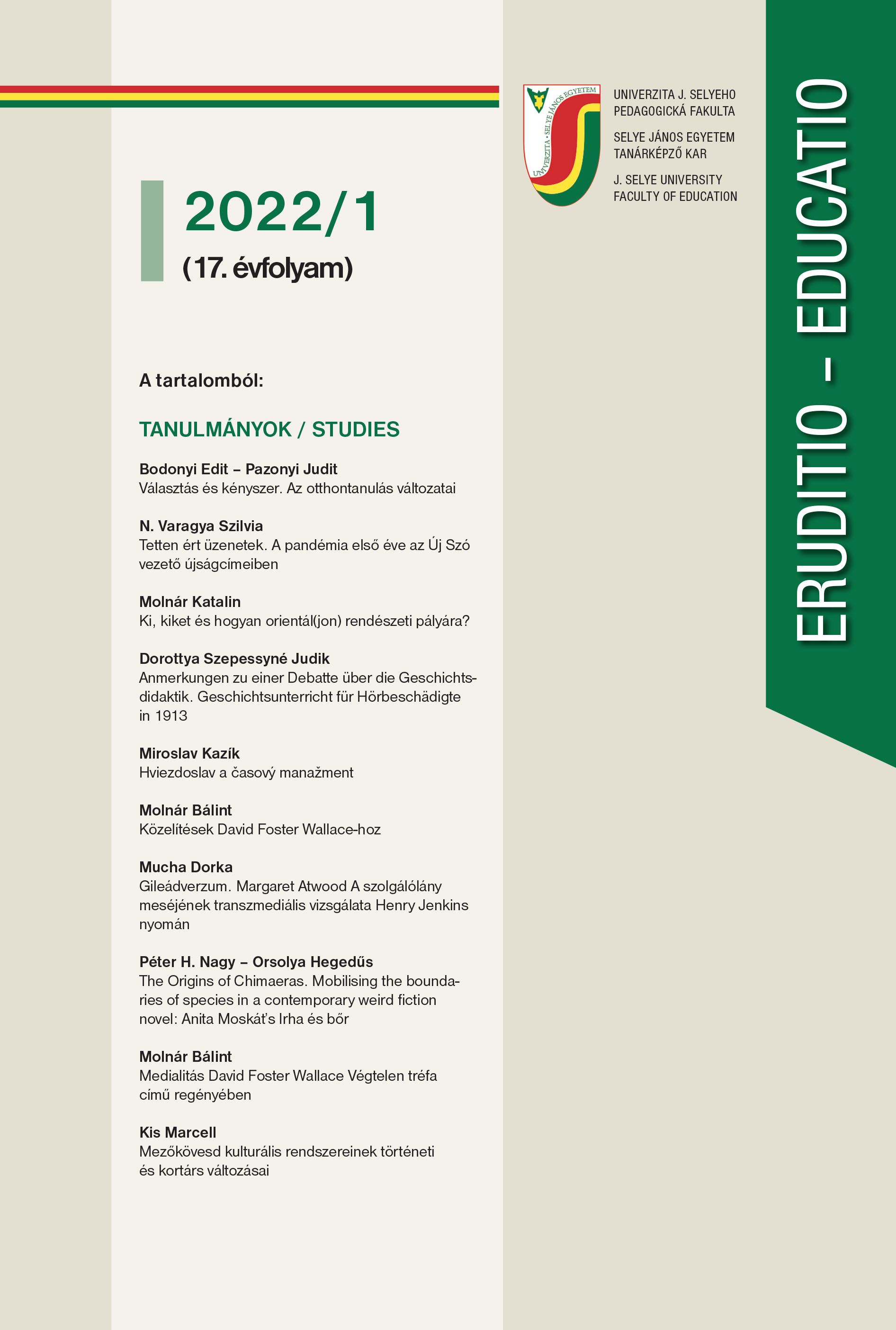Anmerkungen zu einer Debatte über die Geschichtsdidaktik. Geschichtsunterricht für Hörbeschädigte in 1913
Notes on a debate about the didactics of history. Teaching history to students with hearing disabilities in 1913
Author(s): Dorottya Szepessyné JudikSubject(s): Education, History of Education, Pre-WW I & WW I (1900 -1919), Inclusive Education / Inclusion
Published by: Pedagogická fakulta Univerzity J. Selyeho
Keywords: history of education; didactics; methodology of history; textbook research; deaf education; history of the deaf;
Summary/Abstract: In historical Great Hungary, deaf students had no opportunity to attend schools specialized in deaf education until 1802. Before the establishment of the Institute for the Deaf in Vác in 1802, they mostly became beggars, or the family supported them. In 1913, the school network for the deaf consisted of 16 institutes in the Austro-Hungarian Monarchy, established after the Compromise of 1867. Their aim was to provide 8-year education for as many deaf children with special needs as possible in the whole territory of Hungary. The school-leavers could continue their craftsmen’s apprentice studies thus enhancing their social mobility. After establishing the National Board of Teaching Children with Special Needs in 1898, they introduced an integrated curriculum for the deaf and – supplying the previous deficiency - ordered textbooks. As a part of this process, a history textbook was published in 1913, written by Lett József. The contemporary teachers working with the deaf received the new textbook ambivalently. In this paper, I introduce and analyse the aim of teaching history and the methods used before and after the introduction of the textbook written by Lett József. The article tries to answer the following questions: how has issuing the first history textbook changed history teaching of the deaf in general? Which methods were essentially needed to teach history to deaf children? How was the need for historical approach and culture and the history of the deaf represented in the contemporary press dealing with disabilities? The aim of my essay is to demonstrate how the textbook mentioned above and its followers established the identity of the deaf and have shaped it until now.
Journal: Eruditio - Educatio
- Issue Year: 17/2022
- Issue No: 1
- Page Range: 51-66
- Page Count: 16
- Language: German

